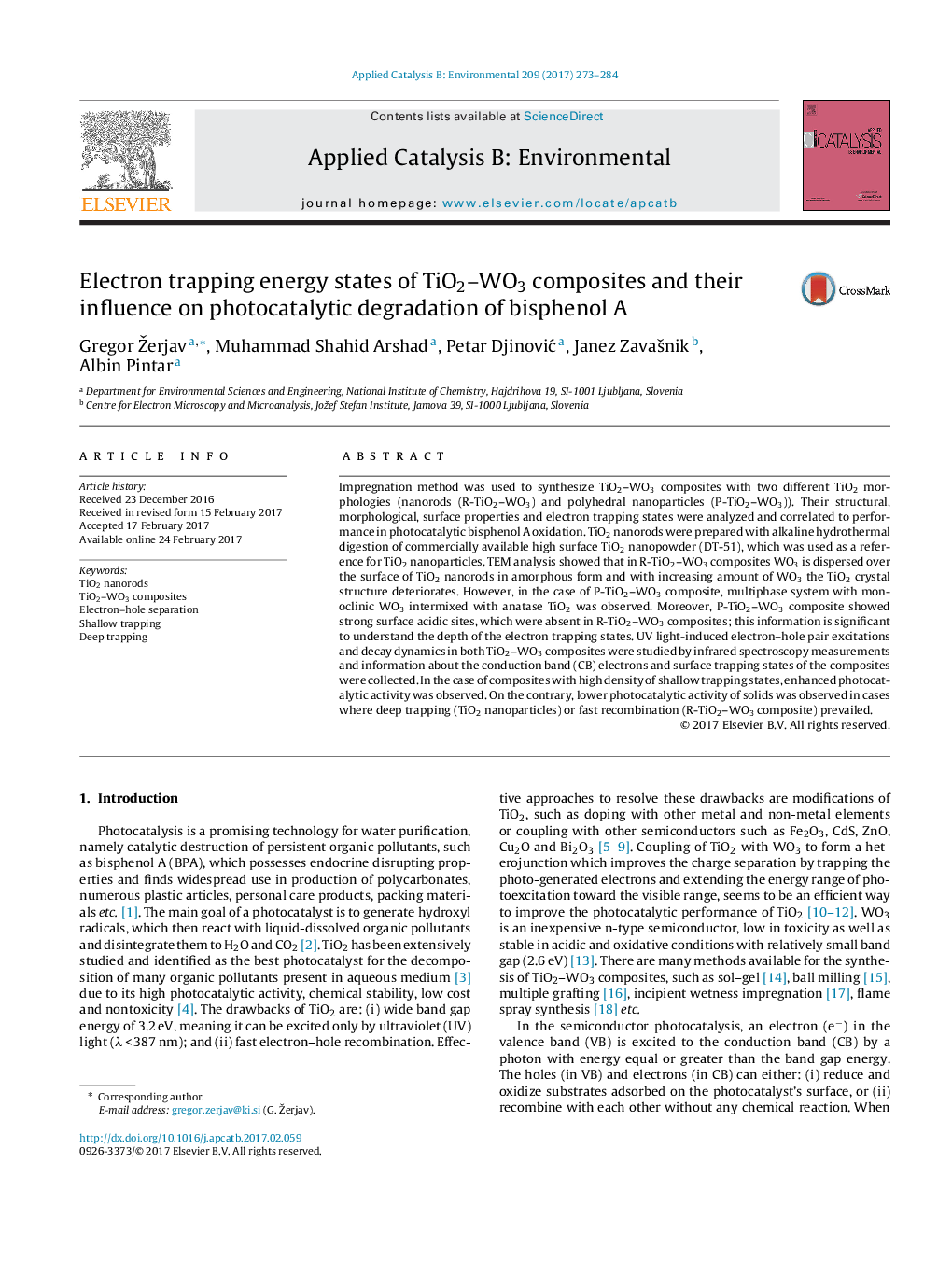| کد مقاله | کد نشریه | سال انتشار | مقاله انگلیسی | نسخه تمام متن |
|---|---|---|---|---|
| 6454172 | 1418811 | 2017 | 12 صفحه PDF | دانلود رایگان |

- A heterojunction between monoclinic WO3 and TiO2 nanoparticles is formed.
- Presence of amorphous WO3 over TiO2 nanorods favors deep trapping of electrons.
- Shallow trapping of electrons favors the overall photocatalytic activity.
- Shallow trapping sites should be considered when designing WO3-TiO2 photocatalysts.
Impregnation method was used to synthesize TiO2-WO3 composites with two different TiO2 morphologies (nanorods (R-TiO2-WO3) and polyhedral nanoparticles (P-TiO2-WO3)). Their structural, morphological, surface properties and electron trapping states were analyzed and correlated to performance in photocatalytic bisphenol A oxidation. TiO2 nanorods were prepared with alkaline hydrothermal digestion of commercially available high surface TiO2 nanopowder (DT-51), which was used as a reference for TiO2 nanoparticles. TEM analysis showed that in R-TiO2-WO3 composites WO3 is dispersed over the surface of TiO2 nanorods in amorphous form and with increasing amount of WO3 the TiO2 crystal structure deteriorates. However, in the case of P-TiO2-WO3 composite, multiphase system with monoclinic WO3 intermixed with anatase TiO2 was observed. Moreover, P-TiO2-WO3 composite showed strong surface acidic sites, which were absent in R-TiO2-WO3 composites; this information is significant to understand the depth of the electron trapping states. UV light-induced electron-hole pair excitations and decay dynamics in both TiO2-WO3 composites were studied by infrared spectroscopy measurements and information about the conduction band (CB) electrons and surface trapping states of the composites were collected. In the case of composites with high density of shallow trapping states, enhanced photocatalytic activity was observed. On the contrary, lower photocatalytic activity of solids was observed in cases where deep trapping (TiO2 nanoparticles) or fast recombination (R-TiO2-WO3 composite) prevailed.
Time-resolved FTIR measurement for TiO2 nanorod and TiO2 nanoparticle composites without and with 4.40Â wt.% of W. Inset is showing the typical temporal variation in the RMS absorption during light ON and light OFF experiments for R+4.40 composite.187
Journal: Applied Catalysis B: Environmental - Volume 209, 15 July 2017, Pages 273-284